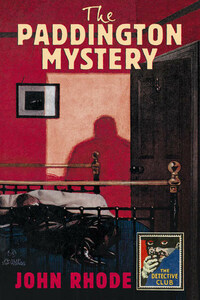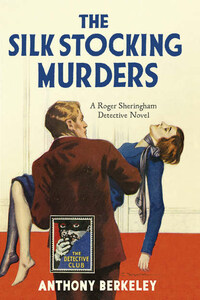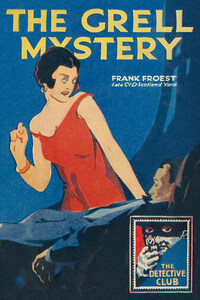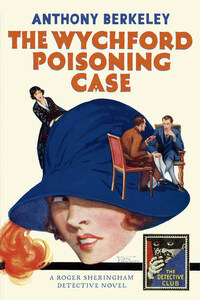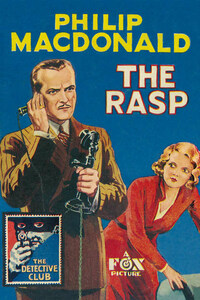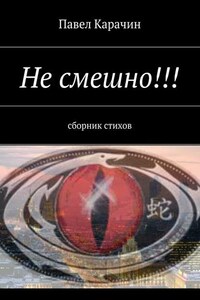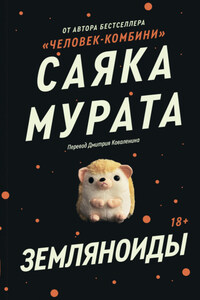COLLINS CRIME CLUB
an imprint of HarperCollinsPublishers Ltd
1 London Bridge Street
London SE1 9GF
www.harpercollins.co.uk
First published in Great Britain by Cassell & Co. 1934
‘The Bunch of Violets’ published in The Specimen Case by Hodder & Stoughton 1924
Introduction © Tony Medawar 2018
Cover layout design © HarperCollinsPublishers Ltd 2018
Ernest Bramah asserts the moral right to be identified as the author of this work.
A catalogue copy of this book is available from the British Library.
This book is presented in its original form and may depict ethnic, racial and sexual prejudices that were commonplace at the time it was written.
All rights reserved under International and Pan-American Copyright Conventions. By payment of the required fees, you have been granted the non-exclusive, non-transferable right to access and read the text of this e-book on screen. No part of this text may be reproduced, transmitted, down-loaded, decompiled, reverse engineered, or stored in or introduced into any information storage and retrieval system, in any form or by any means, whether electronic or mechanical, now known or hereinafter invented, without the express written permission of HarperCollins.
Source ISBN: 9780008297435
Ebook Edition © September 2018 ISBN: 9780008297442
Version: 2018-07-16
‘Abellino,’ said the Doge, ‘thou art a fearful, a detestable man.’
—The Bravo of Venice, Heinrich Zschokke (1771–1848)
BRAVO (1) a daring villain.
—The Oxford English Dictionary
‘THE DETECTIVE STORY CLUB is a clearing house for the best detective and mystery stories chosen for you by a select committee of experts. Only the most ingenious crime stories will be published under the THE DETECTIVE STORY CLUB imprint. A special distinguishing stamp appears on the wrapper and title page of every THE DETECTIVE STORY CLUB book—the Man with the Gun. Always look for the Man with the Gun when buying a Crime book.’
Wm. Collins Sons & Co. Ltd., 1929
Now the Man with the Gun is back in this series of COLLINS CRIME CLUB reprints, and with him the chance to experience the classic books that influenced the Golden Age of crime fiction.
Ernest Bramah Smith, born in 1868, was brought up in Lancashire, England, where he attended Manchester Grammar School. Smith did badly in his academic studies and, after leaving school in 1884, took up farming. While it was an unsuccessful experience, nearly bankrupting his father, farming gave Smith the material for his first book, English Farming, and Why I Turned It Up, which was published as by Ernest Bramah. Inspired by the book’s modest success, Smith took up journalism and secured a position working for the author Jerome K. Jerome at Today Magazine to which Smith contributed numerous short, largely humorous, pieces. He would remain a writer for the rest of his life, editing one magazine—The Minister—and contributing to many others including Chapman’s, Macmillan’s, The Storyteller, London Mercury, Everybody’s and the Windsor, as well as the prestigious title The Graphic.
In the late 1890s, not long after marrying his wife Lucy Maisie Barker at Holborn, London, Smith created the character that was to make him famous: Kai Lung, an itinerant storyteller whose tales and proverbs help him to outwit brigands and thieves in ancient China.
‘My unbecoming name is Kai, to which has been added that of Lung. By profession I am an incapable relater of imagined tales and to this end I spread my mat wherever my uplifted voice can entice together a company to listen. Should my feeble efforts be deemed worthy of reward, those who stand around may perchance contribute to my scanty store, but sometimes this is judged superfluous.’
While many modern readers would dismiss the slyly comic Kai Lung stories as literary yellowface, they were immensely popular on first publication and for many years later and, although Smith never visited China, his portrayal of the Chinese and their customs was accepted as a guide to a country about which most contemporary readers and reviewers knew very little. However, the character of Kai Lung has dated badly and Smith’s purple prose, replicating what he and others considered ‘Oriental quaintness’ and ‘the charm of Oriental courtesy’, means that his many stories of Kai Lung and other Chinese ‘characters’ are little read today.
While continuing to write about Kai Lung, Smith showed himself something of a domestic satirist with, in 1907, The Secret of the League, ‘the story of a social war’ inspired by the success of the then nascent Labour Party in the 1906 General Election. In Smith’s novel, a Labour Government is elected and, crushed by ‘the dead weight of taxation’ and other socialist ‘evils’, the middle classes rise up and, by undermining the coal industry and coal-dependent businesses, cause the Government to collapse. While it anticipates elements of Chris Mullin’s 1982 satire

